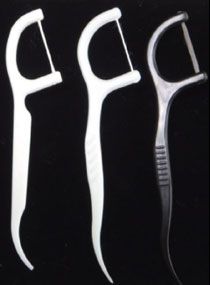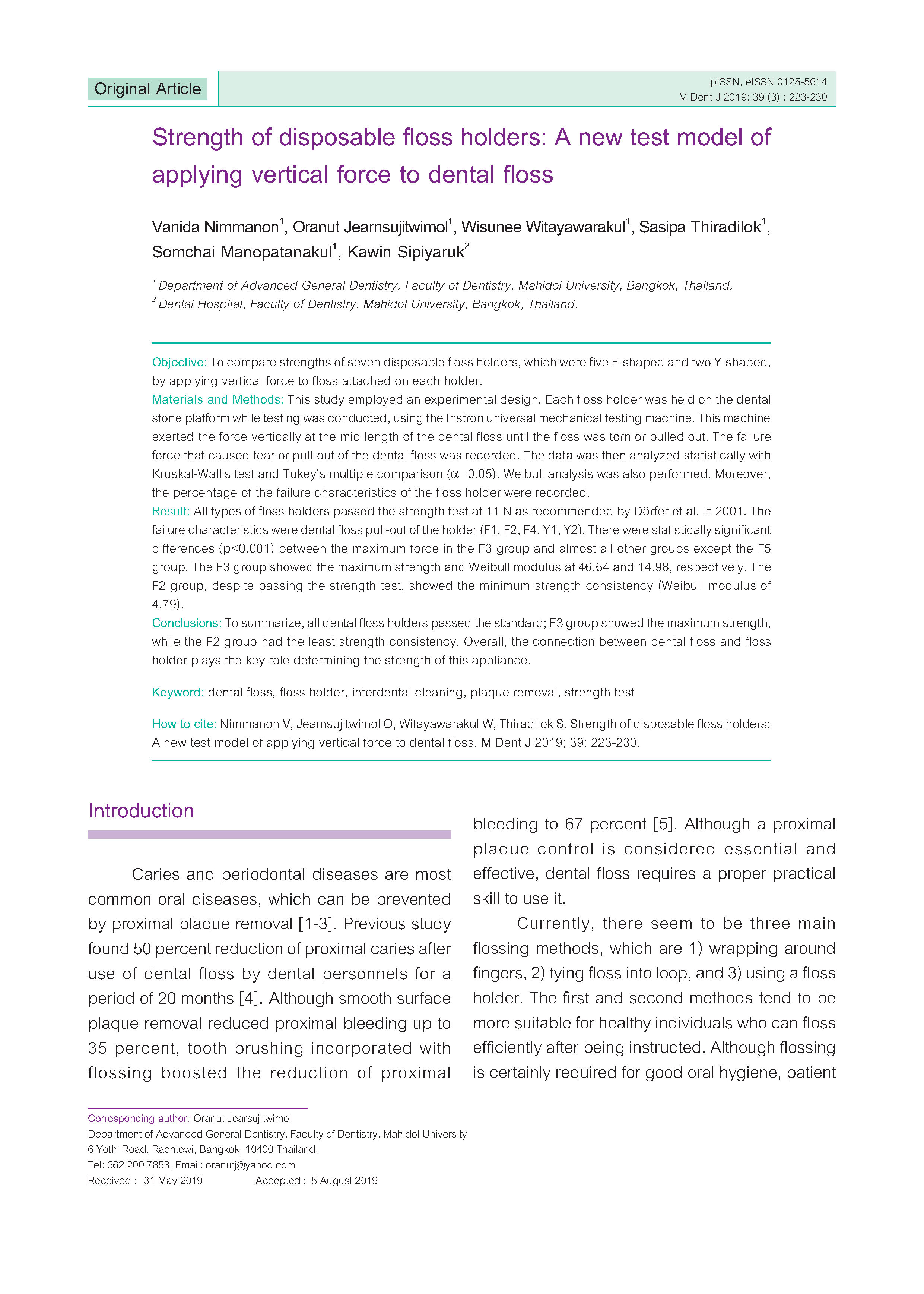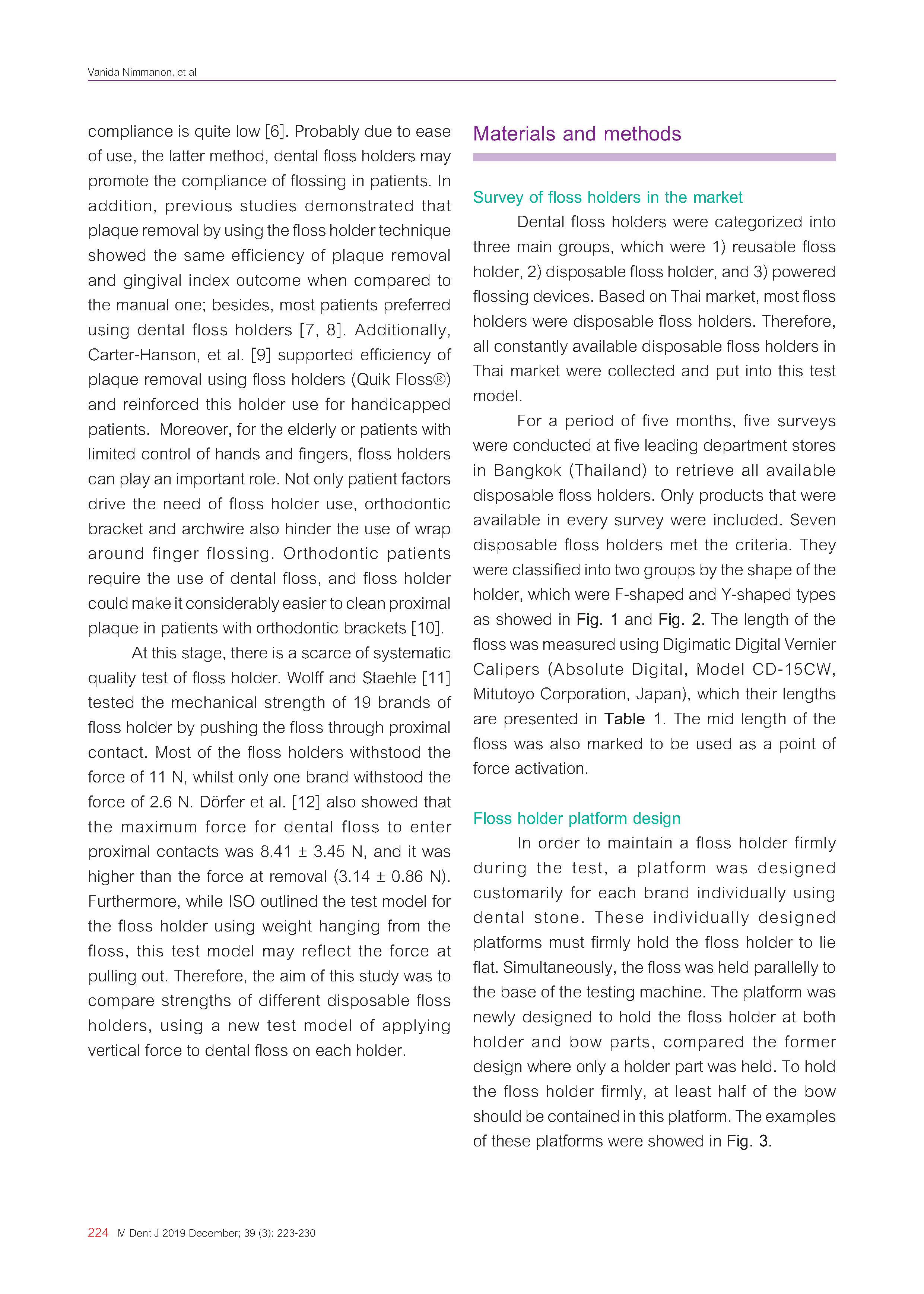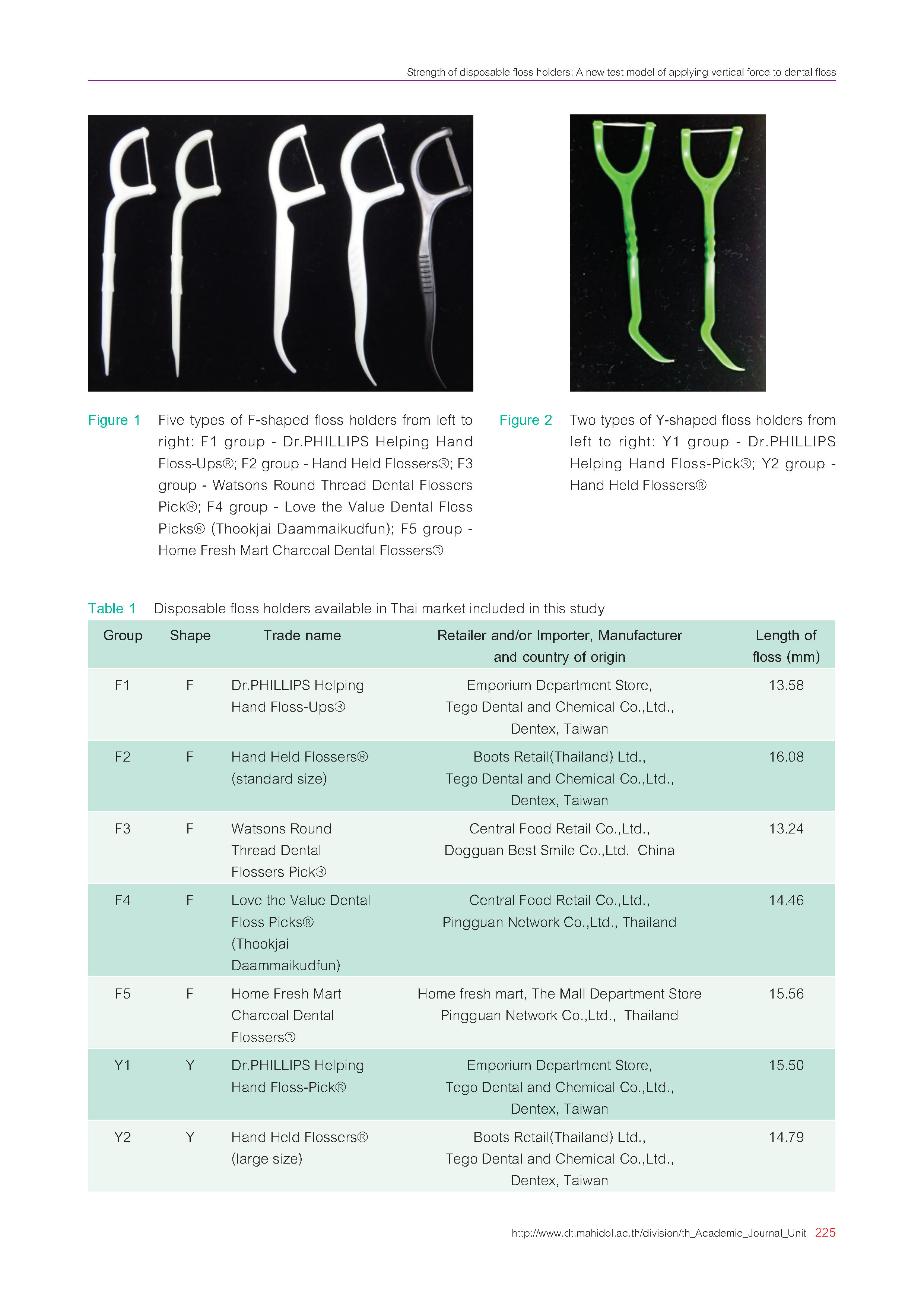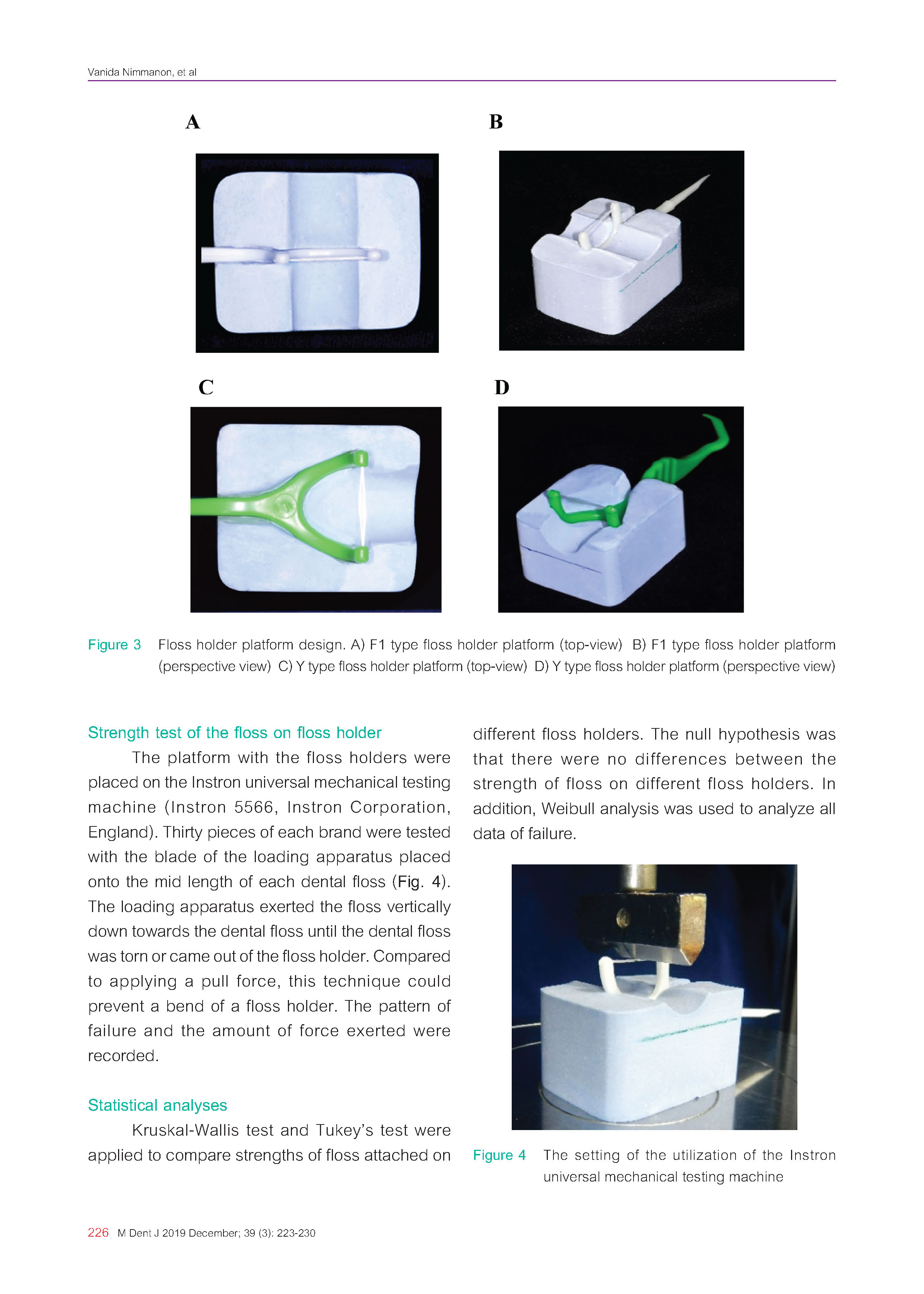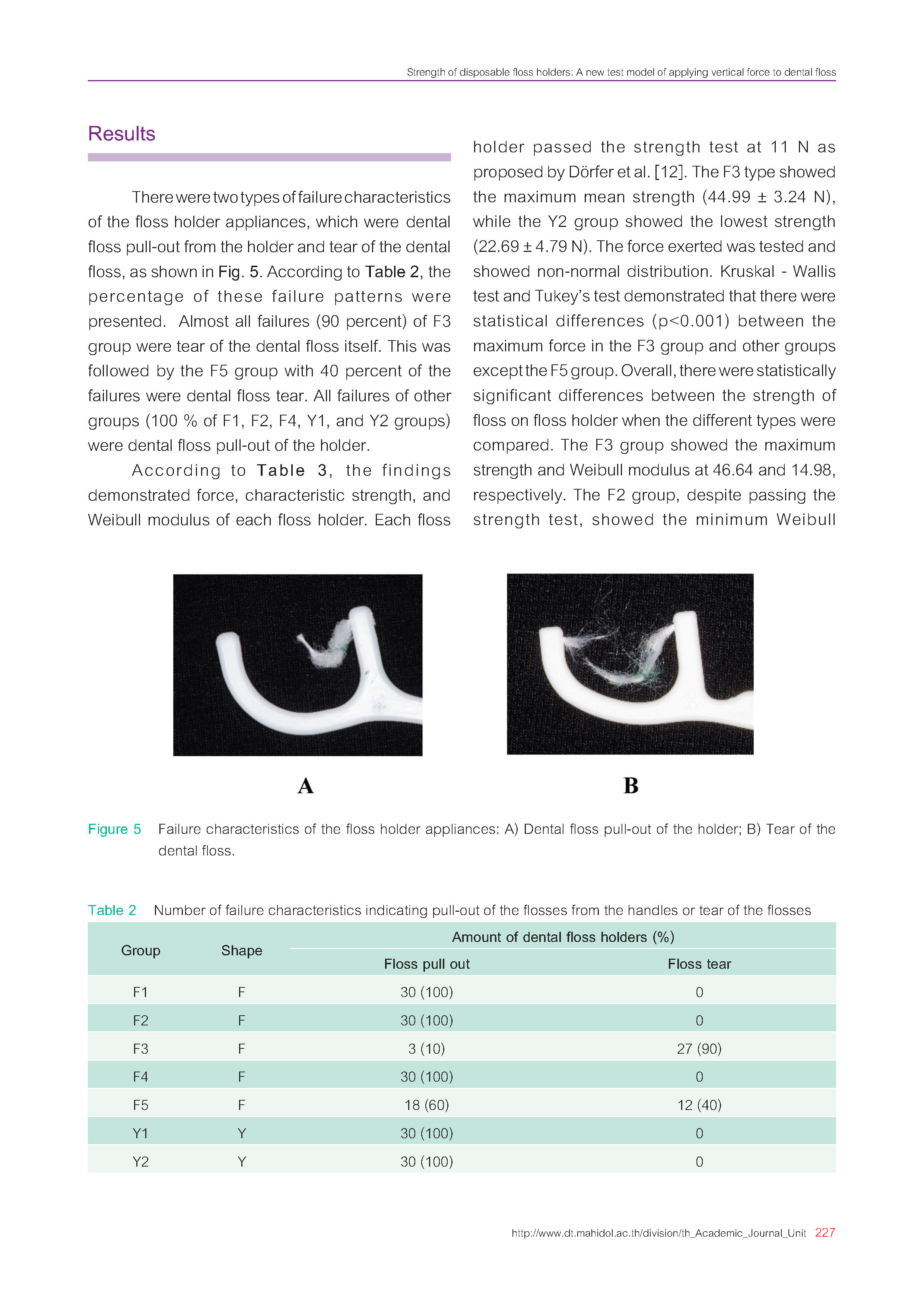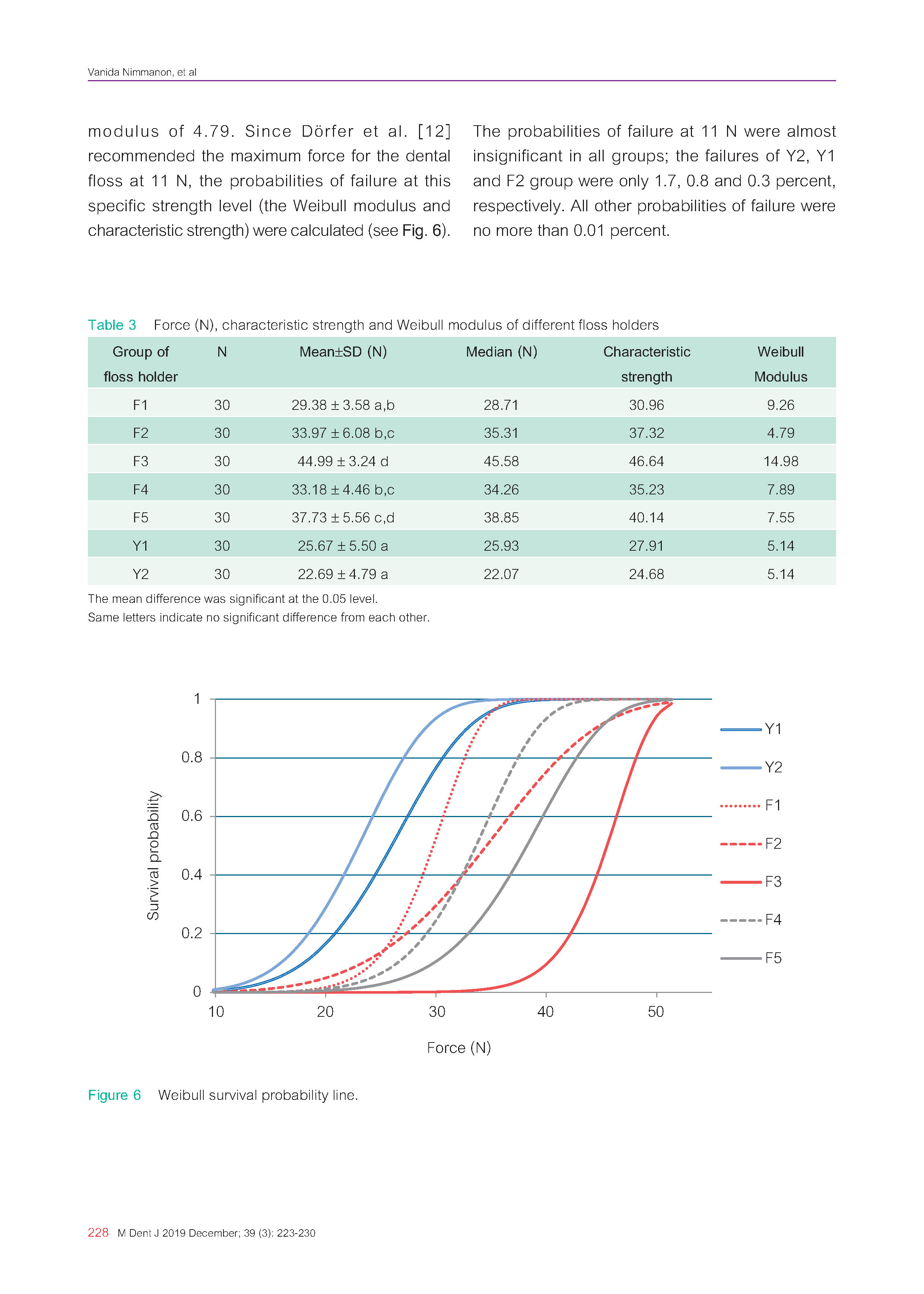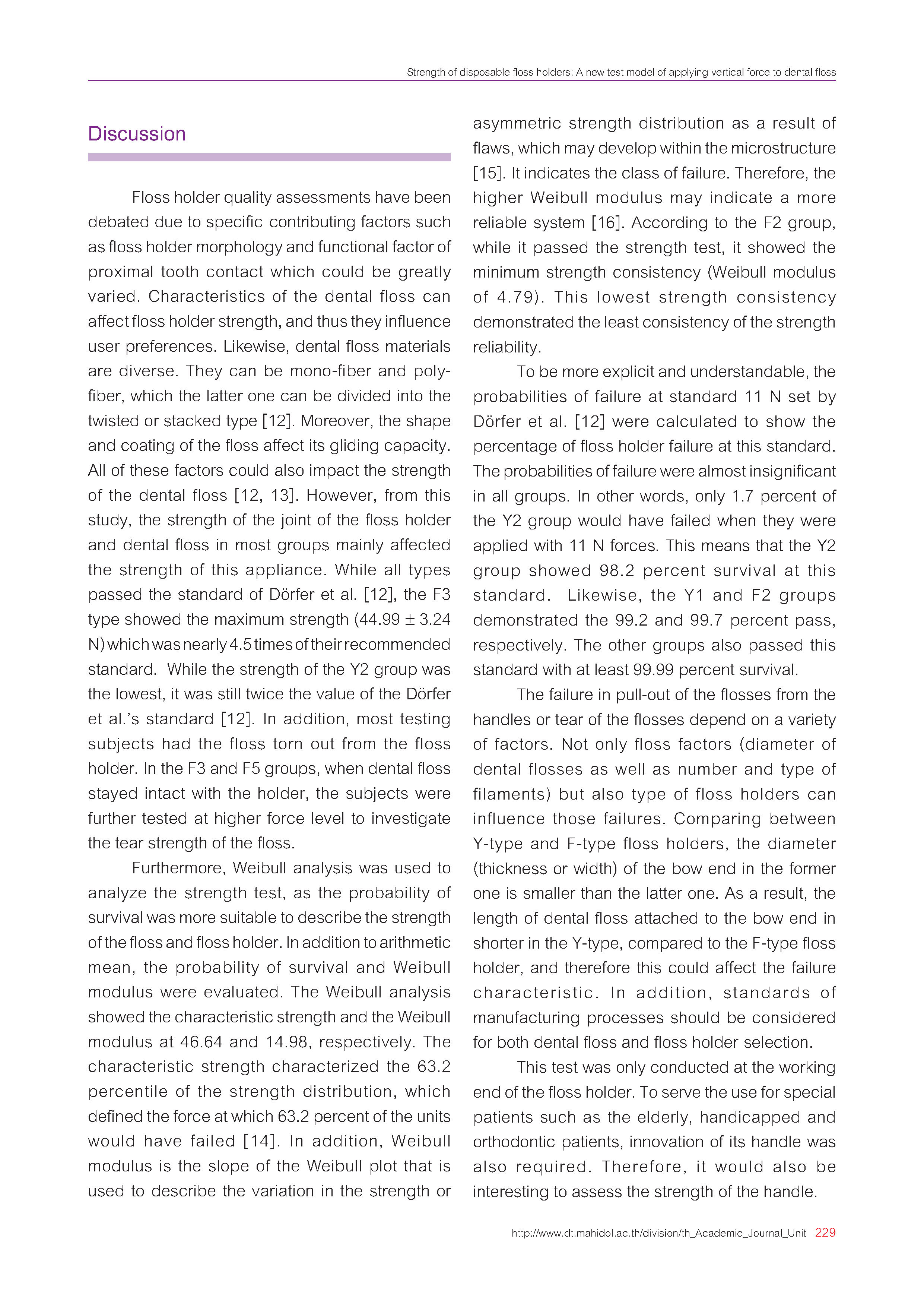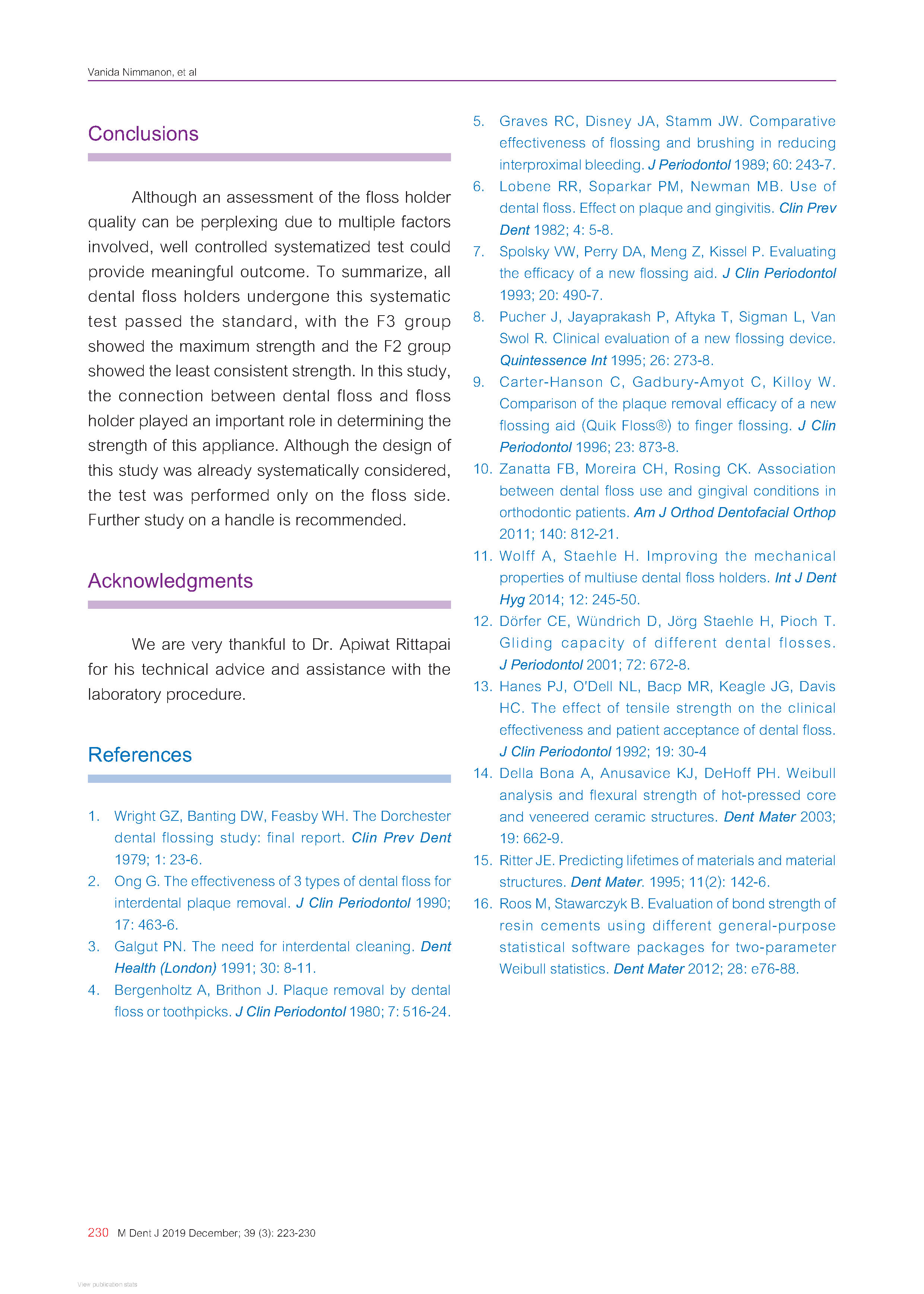บทความ
Introduction
Caries and periodontal diseases are most common oral diseases, which can be prevented by proximal plaque removal [1-3]. Previous study found 50 percent reduction of proximal caries after use of dental floss by dental personnels for a period of 20 months [4]. Although smooth surface plaque removal reduced proximal bleeding up to 35 percent, tooth brushing incorporated with flossing boosted the reduction of proximal bleeding to 67 percent [5]. Although a proximal plaque control is considered essential and effective, dental floss requires a proper practical skill to use it.
Currently, there seem to be three main flossing methods, which are 1) wrapping around fingers, 2) tying floss into loop, and 3) using a floss holder. The first and second methods tend to be more suitable for healthy individuals who can floss efficiently after being instructed. Although flossing is certainly required for good oral hygiene, patient compliance is quite low [6]. Probably due to ease of use, the latter method, dental floss holders may promote the compliance of flossing in patients. In addition, previous studies demonstrated that plaque removal by using the floss holder technique showed the same efficiency of plaque removal and gingival index outcome when compared to the manual one; besides, most patients preferred using dental floss holders [7, 8]. Additionally, Carter-Hanson, et al. [9] supported efficiency of plaque removal using floss holders (Quik Floss®) and reinforced this holder use for handicapped patients. Moreover, for the elderly or patients with limited control of hands and fingers, floss holders can play an important role. Not only patient factors drive the need of floss holder use, orthodontic bracket and archwire also hinder the use of wrap around finger flossing. Orthodontic patients require the use of dental floss, and floss holder could make it considerably easier to clean proximal plaque in patients with orthodontic brackets [10].
At this stage, there is a scarce of systematic quality test of floss holder. Wolff and Staehle [11] tested the mechanical strength of 19 brands of floss holder by pushing the floss through proximal contact. Most of the floss holders withstood the force of 11 N, whilst only one brand withstood the force of 2.6 N. Dörfer et al. [12] also showed that the maximum force for dental floss to enter proximal contacts was 8.41 ± 3.45 N, and it was higher than the force at removal (3.14 ± 0.86 N). Furthermore, while ISO outlined the test model for the floss holder using weight hanging from the floss, this test model may reflect the force at pulling out. Therefore, the aim of this study was to compare strengths of different disposable floss holders, using a new test model of applying vertical force to dental floss on each holder.

